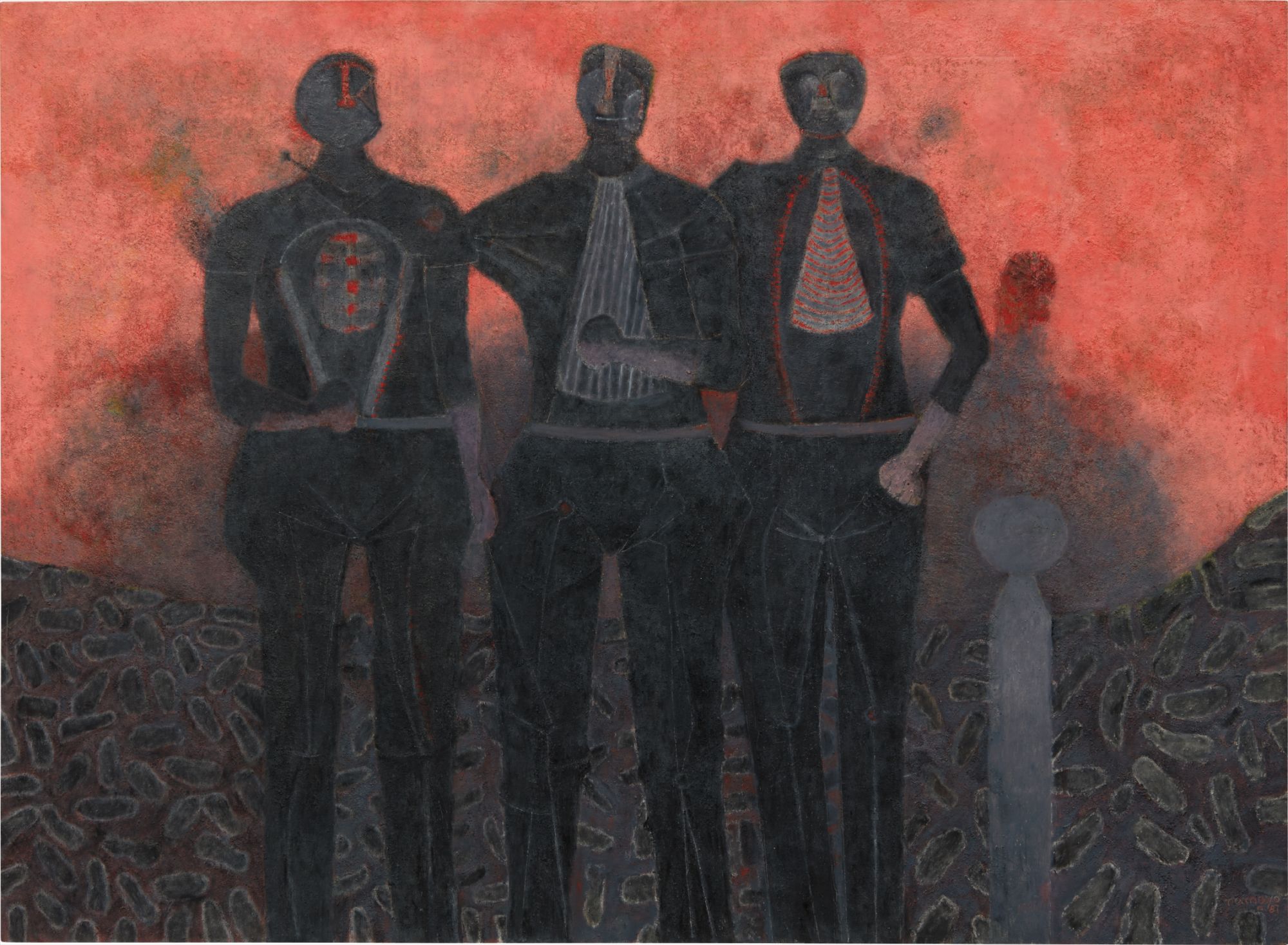

24
Rufino Tamayo
Tres amigos
Full-Cataloguing
The characters in this work are seemingly similar in appearance, yet nonetheless possess characteristics that differentiate and individualize them. They share a cordial proximity, and two of them even embrace each other fraternally. Tres amigos is not the only painting in Tamayo’s extensive inventory of works that references this feeling; during the decade of the eighties—the last period that the artist lived to the fullest—there are several canvases with this specific subject matter and others that allude directly to this sentiment brotherhood in solidarity. In Tres amigos, the figures, which are painted in full length, possess the essential characteristics needed to develop this human gesture. They are similar but at the same time distinct—qualities that are necessary to create that emotional relationship that contains but also differentiates—two conditions necessary to create the dialogue and exchange of ideas in which friendship thrives.
In this canvas, the unity that is created among the three characters through the convergence of affinities and virtues is clear, in which each one of them shows his similarities, but maintains, develops and expresses his own identity. Tamayo alludes to this through elements that express the amiability of each figure, each with a singular face yet related through the use of Pre-Hispanic masks, granting each a mysterious identity. The lower part of the composition, where the feet of the three friends rest, is a base of what looks like solid rock, as if suggesting the characteristic of trust that friendship must possess. That huge rock is animated with organic forms that appear to be in movement, relieving the composition of a possible static quality.
The upper portion of the composition is depicted with a background of iridescent fog that is an intense, unclassifiable pink, an unknown hue of color whose invention gave Tamayo well-deserved fame as an extraordinary colorist. This sunset opens a subtle threshold for the characters that reinforces the idea of unity, and the warmth of the hues plays an important role in the unfolding of unity and fraternity. The opulent texture of the work enriches the eloquence of the painting, evoking the solidity of a stable brotherhood. Tres amigos becomes the aesthetic expression of one of the strongest and most delicate links that human beings can build, that of friendship.
Juan Carlos Pereda
Rufino Tamayo
Mexican | B. 1899 D. 1991Born in Oaxaca, Mexico, Rufino Tamayo was an incredibly prolific artist working until his death at the age of 91. Half-European and half-Zapotec Indian, Tamayo produced work that was defined by his mestizo, or mixed-blood, heritage. Through his studies, Tamayo was exposed to every artistic school of his time including Fauvism, the classical French school, Cubism and Abstract Expressionism, all of which contributed to his style as it developed throughout his life.
Tamayo reacted strongly against the Mexican muralists who dominated the art scene during his coming of age. Instead, his work is firmly grounded in realism while taking creative liberties in color and composition. His art emulates a unique blend of Cubism and Surrealism, joined with a deep understanding of Mexican culture.